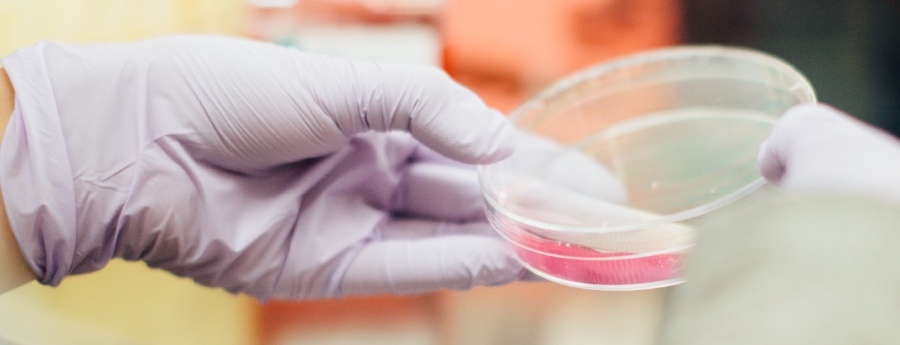From research studies to your pharmacy shelves: the drug development process

When you head to the pharmacy to pick up medicine, you likely aren’t thinking about all the steps it had to take to get into your hands — but did you know that on average, it takes about ten years for a new medication to make it to market? This includes the six to seven years that the medicine will go through clinical trial phases, plus a few others that we’ll discuss below.
To appreciate the role that patients play in helping to bring new medicine to market, it can be helpful to gain an understanding of everything that goes into the drug development process. Participation in these types of clinical research trials helps future patients benefit from new and better treatments, and can help participants today, too. Read on to learn more about the five steps of FDA drug development and typical timelines for each step.
What are the 5 steps of drug development?
1. Discovery and Development: The discovery and development stage is where researchers discover a new drug, typically through new insights, tests, technology, or unexpected side effects of other medications. Potential treatments or therapies are identified all the time, but only a handful make it from discovery to development. This first step doesn’t involve patients directly, but the research is motivated by the needs of people across the globe.
2. Preclinical Research: Before a potential treatment can be tested in humans, it must first undergo extensive testing to ensure it is safe — in fact, only five out of every 5,000 compounds that enter the preclinical phase ever make it to human testing. Preclinical research includes small studies taking place in test tubes and animals, which provide information regarding toxicity and dosing. With this information, researchers can better determine if the potential treatment can be moved along to the clinical research phase.
3. Clinical Research: This is the step where a drug is studied in humans through clinical trials. Researchers design a study by mapping out the processes and desired outcomes for each phase; they then begin the Investigational New Drug Process, a step required by the FDA before any testing in humans begins.There is often hesitation among potential clinical trial participants because of the perceived risks of taking part, including potential side effects or a lack of efficacy. To determine what level of clinical research you may be comfortable joining, , it can be helpful to understand the different clinical trial phases:
- Phase 1: Conducted with 20-100 volunteers to test for specific safety concerns
- Phase 2: Conducted with several hundred volunteers, testing for both safety and effectiveness
- Phase 3: Conducted with several hundred to several thousand volunteers, to further confirm safety and effectiveness in broader populations
4. FDA Review: After the drug has gone through each phase of the clinical trial and researchers believe it to be safe and effective, the company or organization that sponsored the trial will submit a New Drug Application (NDA) to the FDA. The NDA should demonstrate the safety and efficacy of the drug and include all the data that researchers gathered during the first three steps, in addition to proposed labeling, patent information, and usage directions. After determining that the NDA is complete, the FDA has between six and 10 months to decide if the drug is approved. During this process, the FDA will visit clinical study sites, gather all relevant information, and consult with a review team for a recommendation before a senior FDA official makes a final decision.
After approval, the FDA will work with researchers to ensure accurate labeling and schedule an Advisory Committee meeting to review any additional considerations that may have arisen. During this meeting, researchers, patients, and advocacy groups are able to weigh in on any concerns or remaining issues.
In some cases, the FDA will grant an Emergency Use Authorization (EUA) so that drugs can be approved more quickly. EUAs are typically used in instances where there are threats to public health for which no adequate treatment alternatives exist, such as during the COVID-19 pandemic.
5. FDA Post-Market Safety Monitoring: The work of the FDA is not over after a new drug is approved. Once a treatment is released to the market, the FDA will continue to monitor the safety and efficacy of the drug to watch for any unexpected medication interactions, confusion surrounding labeling, or the appearance of additional side effects. If any of these occur, the FDA will work with the research organization to ensure that corrections are made.
How long is each step of drug development?
Because it is so important to ensure that new drugs are safe and effective, the drug development process can take quite a bit of time to move through each step. While each potential treatment can vary on its timeline (and there are obvious exceptions, such as the acceleration of development of COVID-19 vaccines), below is a look at how long each step typically takes:
- Discovery and Development typically takes four to five years
- Preclinical Research typically takes at least a year
- Clinical Research takes several years to complete across all of the phases
- FDA Review takes between six and 10 months
- Post-Market Monitoring is an ongoing process
While there is a lot that goes into the drug development process, patients are at the heart of every stage. Researchers need to confirm safety, efficacy, and long-term impact to get new treatments approved — which is why patients participating in research is a crucial part of the development process. If you’re interested in helping researchers find tomorrow’s treatments, get matched with a clinical trial at the link below.
Topics: For Patients
